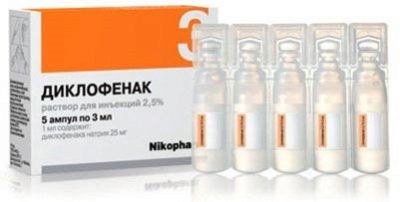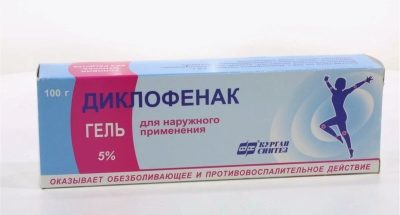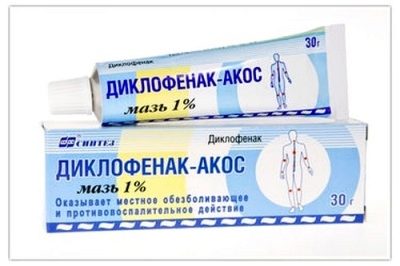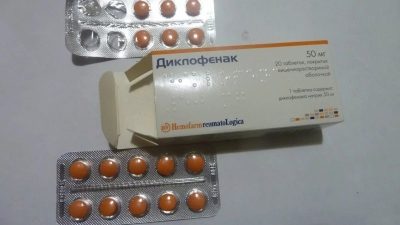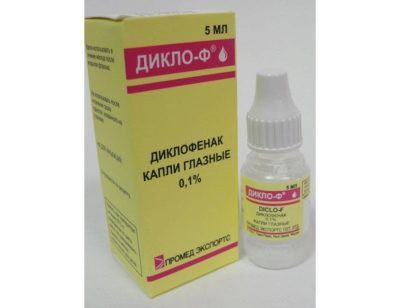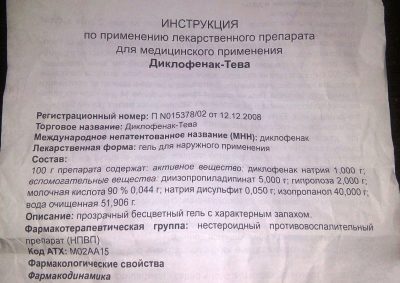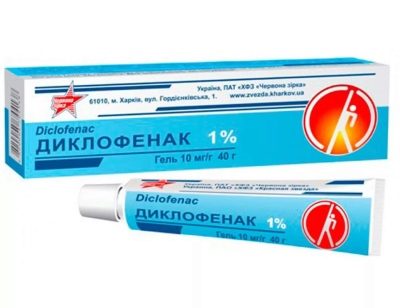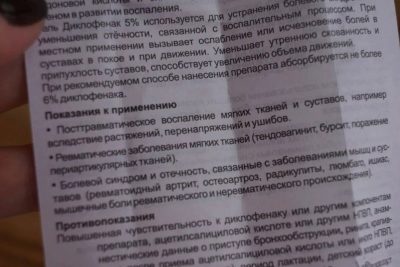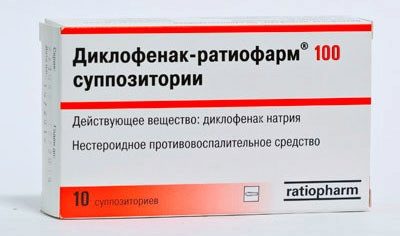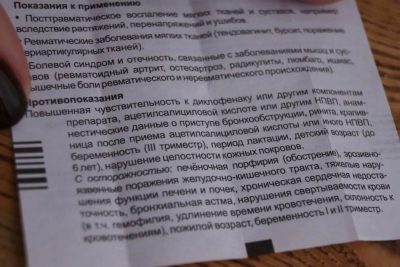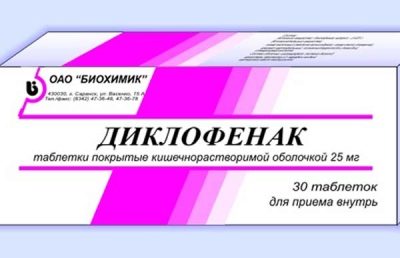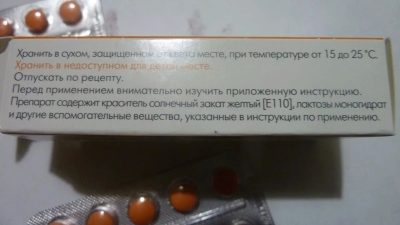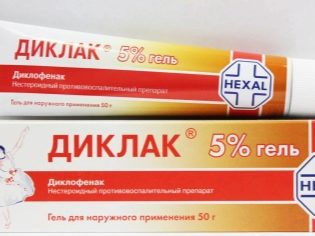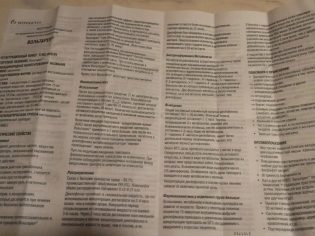Diclofenac for children
Diclofenac is one of the most popular anti-inflammatory drugs. It is in demand among adults with arthritis, muscle injuries and other problems manifested by pain. Not everyone knows whether it is possible to use such a drug in childhood, when it is prescribed to children.
Release form
The drug is presented in different forms.
Muscle Injection Solution
One package of this medicine contains 5 or 10 ampoules of 3 ml of yellowish or colorless transparent solution.
1% or 5% gel
It is a white, white and cream or white and yellow homogeneous mass, which in one tube can be from 15 to 100 g.
About the properties of the ointment "Diclofenac" - a detailed video in the treasury of our visitors.
1% ointment
This medicine is a white substance with an unexpressed smell. It is usually sold in banks or tubes of 30 g, but some manufacturers produce other options.
Rectal suppositories
They have a white or white-cream color, a torpedo shape and a uniform structure. One box includes 5, 6 or 10 candles.
"Diclofenac" for cystitis. About this in a small videolike.
Pills
They are distinguished by a convex round shape and the presence of an orange-colored shell, which dissolves in the intestine. Long-acting tablets are available, which have a pink film shell. One pack of tablets contains from 10 to 50 pieces.
Eye drops
This is a clear liquid with no color or with a yellowish tinge, placed in plastic dropper bottles (in a volume of 5 ml).
Composition
- In one tablet, such a compound is represented by a dosage of 25 or 50 mg. Inside the drug with a long-lasting effect contains 100 mg of diclofenac sodium. Sodium lauryl sulfate, lactose, povidone K30, magnesium stearate and other substances can be distinguished among the auxiliary components of the solid drug.
- One suppository contains 50 or 100 mg of diclofenac sodium, to which solid fats and other ingredients are added.
- The concentration of diclofenac in the ointment is 10 mg per 1 g of the drug. The auxiliary ingredients of this form are propylene glycol, dimethyl sulfoxide and macrogol.
The composition of the forms "Diclofenac" is different, but the main ingredient of any of them is diclofenac sodium.
- Such a preparation may contain either 1 or 5 g of diclofenac sodium per 100 g of drug (depending on the concentration of the gel). Additionally, it includes propylene glycol, lavender oil, purified water and other compounds.
- 1 ml of the solution for injections contains 25 mg of the active substance, supplemented with sodium hydroxide and disulfite, benzyl alcohol, mannitol, liquid for injection and propylene glycol.
- The content of diclofenac in 1 ml of eye drops is 1 mg. The drug also contains sterile water, propylene glycol, sodium chloride and other compounds.
Operating principle
"Diclofenac" has a strong anti-inflammatory effect due to its ability to suppress the formation of substances that support and activate the inflammatory process. By this action, this medicine is superior to almost all other drugs from the group of nonsteroidal anti-inflammatory drugs.
No less pronounced and analgesic effect of "Diclofenac." In addition, the drug has antipyretic and antiplatelet effects. The use of medication reduces pain, relieves swelling at the site of inflammation and accelerates recovery in various inflammatory diseases. With local use, the drug almost does not penetrate into the blood and acts only where it is applied.
Indications
Most often, "Diclofenac" is prescribed for pain caused by inflammation.
For this purpose, the medicine is prescribed for:
- Neuralgia.
- Arthritis.
- Tendovaginitis.
- Bursitis.
- Muscle aches.
- Pain syndrome after injury or surgery.
- Toothache.
The drug can also be used in combination with other drugs in the treatment of pharyngitis, otitis, tonsillitis and other diseases, if they manifest severe pain and high fever.
At what age is it allowed to take?
- Local forms of "Diclofenac" (ointment, gel) are allowed for children over 6 years old.
- The use of tablets with a dose of 25 mg is also not recommended until the age of 6, but with the indications such a drug can be prescribed to younger children.
- Injections are not prescribed to children under 11 years of age.
- Tablets and suppositories with a dosage of 50 mg are contraindicated for up to 15 years, and the medicine with prolonged exposure (tablets and suppositories with 100 mg of diclofenac) is not prescribed before 18 years.
- The use of eye drops under the age of 18 should only be prescribed by a doctor (if the expected effect is more important than the risk of side effects).
Contraindications
Diclofenac is not used:
- If the patient has hypersensitivity to any of its components.
- If a child is diagnosed with an ulcerative or erosive lesion of the gastrointestinal mucosa, as well as bleeding in the digestive tract.
- In case of bronchial asthma and aspirin intolerance.
- If inflammatory bowel disease has worsened - for example, Crohn's disease.
- With disorders of hemostasis and blood formation - for example, with hemophilia.
- With serious liver pathologies.
- In severe renal failure.
Tablets are not used for lactose intolerance or glucose-galactose malabsorption, and ointment or gel is prohibited in case of skin damage. Increased attention to the doctor requires the appointment of "Diclofenac" for anemia, heart failure, edema, diabetes and many other diseases. Adults do not recommend medicine during pregnancy and breastfeeding.
Side effects
During treatment with Diclofenac, there may be:
- Negative symptoms of the digestive tract - for example, pain in the stomach, nausea, loss of appetite, thinning of the stool, or flatulence.
- Disorders of the liver, which are manifested by increased activity of enzymes.
- Headaches as well as dizziness.
- Allergic reactions if the child has diathesis.
More rare side effects of the drug are drowsiness, jaundice, gastritis, ulcerative lesions of the gastrointestinal tract, insomnia, depression, tremor, visual disturbances, increased blood pressure, inflammation of the kidneys and others. When they occur, it is important to immediately seek medical attention.
Instructions for use
- «Diclofenac tablets should be taken with a meal or immediately after a meal. The dosage for tablets of 25 mg of the active ingredient is calculated by the weight of the small patient. To do this, the weight of the baby is multiplied in kilograms by 0.5-2, the resulting number of milligrams divided into 2 or 3 doses. For example, if a child at 9 years old weighs 30 kg, then the daily dose of “Diclofenac” for him will be 15-60 mg.
- A child over 15 years old is given pills with a dose of 50 mg of the active substance, 1 piece each (2-3 times a day).
- Calculation of the suppository dosage is also carried out by weight, assigning from 0.5 to 2 mg of the active ingredient to each kilogram of the patient’s body weight.
- Diclofenac injections are prescribed only briefly (not longer than 2 days), and then transferred to other forms. The drug needs to be pounded deep into the muscle tissue.
- Gel / ointment is applied to the desired area of the skin with a thin layer, and then gently rubbed.An occlusive dressing is not applied to the treated area. The manipulation is carried out 2-4 times a day. The dose of local remedies at the age of 6-12 years is 1-2 g, and for a child over 12 years old - 2-4 g of the drug. The maximum dose per day is 8 g, and the duration of treatment is 1-2 weeks.
Overdose
If the dose is too high, it provokes vomiting, diarrhea, dizziness, convulsions and other dangerous symptoms. The patient should immediately flush the stomach and call a doctor.
Drug interaction
Diclofenac treatment can affect many other medications. These are, for example, diuretics, anticoagulants, corticosteroids, hypoglycemic and other medications. Joint appointment with any other drugs should be controlled by a doctor.
Terms of sale
Gel and ointment "Diclofenac" can be freely purchased at a pharmacy without a prescription, and the remaining forms of the medication are prescription drugs.
Storage conditions and shelf life
Any form of "Diclofenac" should be stored at room temperature - from +15 to +25 degrees. The shelf life of various forms and different manufacturers may be 2, 3 or 4 years, so it should be determined by the date on the package.
Reviews
About the use of "Diclofenac" leave a lot of good reviews. The drug is praised for a large variety of dosage forms, so that it can be used for various problems. Parents note that this medicine effectively eliminates pain and helps get rid of inflammation. Like the drug and the fact that it is available in most pharmacies, and its cost is quite acceptable.
As for the cons of medication, the main disadvantage is the frequent occurrence of side effects (like other drugs of his group). According to moms, they are in most cases represented by a negative reaction of the digestive tract, allergies, dizziness or headaches.
Analogs
Replace "Diclofenac" can other drugs, which are based on the same active compound. These include "Diklak", «Voltaren», Diklovit, "Naklofen", "Diklobene", "Ortofen" other. They are produced in different forms (gel, ointment, injections, tablets, capsules), therefore, it is not difficult to choose a suitable analogue. In addition, the medication can be replaced by other drugs from the group of anti-inflammatory drugs of non-steroid structure (for example, Ibuprofen).
More clearly about diclofenac and its application can be found in a special video.



